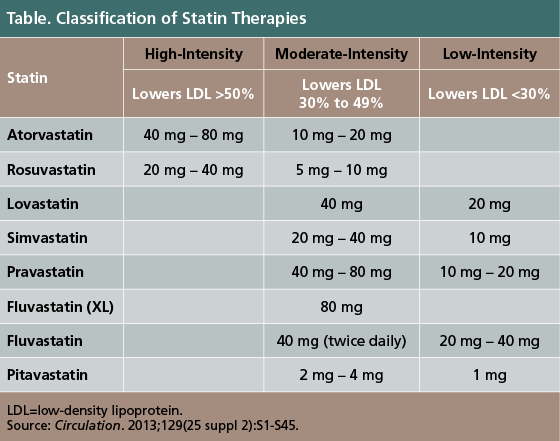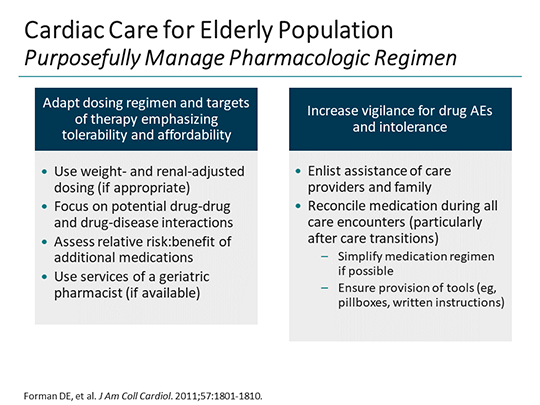

In Japan, which is a developed country, only 19.2 of FH individuals were treated with high-intensity statins (Teramoto et al., 2018).

Diabetes (Primary prevention) with Age 40-75 and LDL 70-189 mg/dl Age 75 years: Moderate intensity statinĭ.Symptomatic peripheral arterial disease (claudication with ABI Peripheral artery disease, including aortic aneurysm, all of atherosclerotic origin.Stable or unstable angina or other arterial revascularization.Moderate intenstity (LDL lowering 30-49%)Ĭlinical ASCVD (Atheroscelrotic Cardiovascular Disease) Clinical ASCVD (Atheroscelrotic Cardiovascular Disease)ī.Statin Use for the Prevention of Cardiovascular Disease in Adults. By Staff According to a number of studies, statins have an anti-inflammatory effect in addition to their cholesterol-lowering effect. According to the British NICE guideline, 11 high-intensity statin use was defined as atorvastatin 20 mg/day, rosuvastatin 10 mg/day, and simvastatin 80 mg/day, medium-intensity as atorvastatin 10 mg, fluvastatin 80 mg, rosuvastatin 5 mg, simvastatin 20 and 40 mg, and low-intensity as others.
“Not only do we hope to continue studying this population, but we also hope to study patients without prior cardiovascular disease but who are at high risk for it,” said Rodriguez. Current American College of Cardiology (ACC) and American Heart Association (AHA) guidelines provide a class 1 recommendation supporting highintensity statin therapy (eg, rosuvastatin 2040 mg, atorvastatin 4080 mg) for all patients aged <75 years with atherosclerotic cardiovascular disease, including PAD. High-intensity (LDL-C reduction >50) Atorvastatin: NA: 10 to 20 mg: 40 to 80 mg: Fluvastatin. High-intensity Statins May Reduce MGD However, regular use of these cholesterol-lowering drugs had no effect on dry eye signs or symptoms.The researchers also hope to follow up on longer-term data from these patient populations. Non-statins: As an add-on therapy in patients not reaching their low-density lipoprotein (LDL)-cholesterol goals with. The researchers said their next step is to find out why some patients who should be on high-intensity statins are not. Most guidelines recommend moderate to high-intensity statin, based on the level of risk, for primary prevention of CV events (Grundy et al., 2019, Mach et al., 2020, Yusoff et al., 2017, Gonzalez-Santos et al., 2021). Even in patients over 75 - a population that is largely ignored in studies - higher-intensity statins led to a 9 percent higher survival rate.Īs Fatima Rodriguez, MD, a cardiology fellow at Stanford and the study’s lead author, said in our release: "This suggests to practitioners that instead of starting a patient on a low dose, just to go ahead and put them on the maximum dose they can tolerate." Over a one-year duration, they found that patients on higher-intensity statins had a 9 percent higher survival rate as compared to those on moderate doses. Some prior studies have shown that powerful, high-intensity statins increased the rates of side effects such as diabetes or muscle damage, creating controversy around the types of statins doctors should prescribe to their patients, if at all.Īs Paul Heidenreich, MD, professor of cardiovascular medicine and the study’s senior author, told me: "Previously, there was a certain amount of fear on the patient’s part because most people don’t like taking medication."įor this study, Heidenreich and his colleagues studied the medical records of 509,766 patients in the Veterans Affairs Health Care System. A set of guidelines put forth by the American College of Cardiology and the American Heart Association categorizes them into low-intensity, moderate-intensity, and high-intensity statins based on their strength for reducing bad cholesterol. 17 Thereby, concomitant initiation of a high-intensity statin and a PCSK9 inhibitor resulted in a PAV regression that is.
High intensity statins trial#
There are currently seven main types of statins prescribed in the United States. PAV at baseline, which has been reported to correlate positively with the achieved PAV reduction with statins 19 or evolocumab, 20 was greater in this study (mean PAV, 42) compared with the GLAGOV trial (mean PAV, 36.4). In a study publishing this week in JAMA Cardiology, Stanford researchers show that taking high-intensity statins could increase heart patients’ chances of survival over taking moderate-intensity statins.


 0 kommentar(er)
0 kommentar(er)
